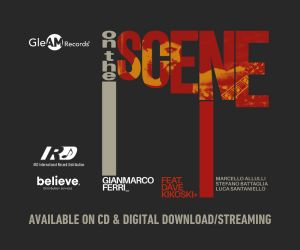“What goes around comes around”. So said Jon Christensen to me a couple of decades ago as we listened to a concert by the Norwegian experimental band Jaga Jazzist. As Jon knew, it’s scarcely the fault of young musicians who believe they have something new and distinctive to offer the world if older ears detect familiarity rather than freshness in their work.
Resident in Reykjavik, Tumi Árnason (born 1991) is an accomplished, dynamically aware tenor saxophonist. He has a middling-to-full – if sometimes a tad uninflected – sound out of the Ayler/European free improvising gene pool, which he embellishes from time to time with a judicious use of electronics. Drawing inspiration from what the press release for this, his latest album, calls “the creative transcendence and open-mindedness of the avant-garde, free jazz and improvised music”, Árnason can sustain an affecting lyrical ambience in the upper registers.
Apparently, for all the richness of the recent music scene in Iceland, free jazz and improvised music have not yet had a great deal of exposure or documentation. So in the Far North, it’s a pioneering furrow that Árnason and his colleagues plough on this two-LP release from Reykjavik Record Shop. It is Árnason’s third album under his own name, following the 2017 Smitum and the 2019 Allt Er Ómælið.
The first was a two-track mini-LP on Smit Records lasting 11 minutes. I enjoyed it, because of its brevity and the fact that the music featured both an ostinato-sprung forward momentum and the contrast of an effective atmospheric stasis. Subsequently, Árnason has replaced any such forward motion with a deepening of the atmospheric factor and the sort of clipped, urgent phrases which typify so much of both historical and contemporary free improvising. One thing is for sure: by any conceivable definition of the term, swing is not a factor.
Allt Er Ómælið has nine tracks, totalling 41 minutes or so. It’s a duo session with the lively and thoughtful Icelandic-Norwegian drummer Magnús Trygvason Eliassen, who appears on Hlýnun and who will be known to followers of Icelandic music through his work in ADHD. Unfortunately, for all the range of attack and dynamics shown by both participants I found it hard to maintain interest. The echoes of Brötzmann and Garbarek in (respectively) the machine-gun bursts of Perfect Animal and the fog-horn longueurs of I Want To To Die When I Grow Up served chiefly to remind me of the old existentialist query: Is there life before death?
My loss, no doubt: the album has sold out and did much to enhance the reputation of both participants. The six-part suite that is Hlýnun – which runs for some 50 minutes – has already had much positive response. The music takes on a big theme. Hlýnun translates as “Warming” and the press release speaks of its relation and response to “our current existential threat, the climate crisis”.
The Icelandic poet Thorsteinn Frá Hamri (1938-2018) wrote once of being “smitten by the angry sobbing of a destructive age”. Certainly, there’s a strong and moody ethos in Hlýnun, which will be welcomed by anyone who has enjoyed the wind-harp caressed and brass-pumped ECM classic which is Garbarek’s Dis of 1976. Initially, Árnason moves from sombre, patiently emergent and big-toned sound arches to a variety of the aforementioned clipped and bustling phrases.
As the suite develops, long-held and lyrically cast tenor utterances are complemented by the carefully weighted – if sometimes a touch rhythmically stiff and, in Sverrisson’s case, flatly intoned – contributions from piano, electric bass and drums, with some assertive moments of electronic distortion from Ragnarsson. You can hear a half-an-hour or so of the suite on YouTube, from an August 2020 performance at Reykjavik Town Hall.
Long familiar as many of its elements were, I appreciated the ambition and achievement of this music. I would have enjoyed it more had the stylishly marbled 180gm LPs not got stuck in the groove now and then. While there is no CD version (which I would have preferred) Hlýnun is available via digital means, which provided a much better listen.
Which leads me to wonder: the materials may well have been sourced from recycling, but exactly how is the cause of reducing our carbon footprint served by producing a half-a-kilogram package of a two-LP set – one side of which lasts all of eight minutes – encased in a fold-out heavy-duty poster of photo-collages, diagrams, scores and all-Icelandic texts?
Discography
LP1: Lungi; OOAA (13.25) – Svart Haf (12.32)
LP2: Songur Ur; Svartholinu (15.37) – Um Heimsslit; Sud (8.33)
Árnason (ts); Magnús Johann Ragnarsson (p, elp); ); Skúli Sverrisson (elb); Magnús Trygvason Eliassen (d, pc). Iceland, January 2019 – December 2020.
Reykjavik Record Shop RRS -028















